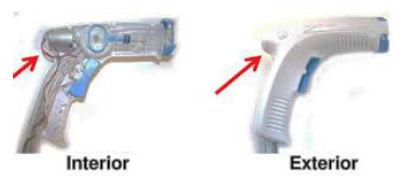Argument preview: Justices to consider standard for enhanced damages in patent cases

on Feb 16, 2016 at 2:05 pm
The Justices next week will turn to patents for the first time during the October Term 2015, hearing a pair of consolidated cases, Halo Electronics v. Pulse Electronics and Stryker Corp. v. Zimmer, Inc. Those cases present the standard for awarding enhanced damages under 35 U.S.C. § 284. In the likely event that you don’t have it at your fingertips, Section 284 provides that the trial judge in a patent case, after damages have been determined, “may increase the damages up to three times the amount found or assessed.” If the statute seems vague at first glance, it will remain so however many times you read it. Just to be clear: the statute offers no guidance on the proper criteria for enhancing damages, and the Court has not spoken to the question in more than half a century. So that means the Justices have a relatively free hand in deciding what to do with the statute.
Given the amounts of money at stake, it should be no surprise that the case is well briefed. If the purpose of a brief is to provide a comprehensive framework that coherently addresses all aspects of the case through a single lens, both sides have done an excellent job, as they offer two competing and well-justified narratives of what the case is (or should be) about. We have, then, a tale of two briefs.
The relevant facts are simple. The petitioners in the two cases are the plaintiffs Halo and Stryker, each of which owns a patent infringed by the defendants (Pulse in the Halo case, Zimmer in the Stryker case). In both cases, the Federal Circuit held that enhanced damages were not available under that court’s 2007 decision in In re Seagate Technology, LLC, which permits enhanced damages only upon clear and convincing evidence of objectively reckless willfulness.
Essentially, Halo and Stryker present the case as a reprise of Octane Fitness, LLC v. ICON Health & Fitness, in which the Court considered the standard for awarding attorney’s fees to a prevailing party under 35 U.S.C. § 285 (the section of the Patent Act that follows immediately after Section 284). Section 285 is just as vague as Section 284, stating that a “court in exceptional cases may award reasonable attorney fees.” And the Federal Circuit had imposed a standard almost identical to the standard at issue here: requiring clear and convincing evidence of conduct that was both objectively and subjectively reprehensible. On review, in Octane the Court dismissed the Federal Circuit jurisprudence out of hand, characterizing its narrow “inflexible framework” as ill-suited for such an “inherently flexible” statute and mandating a fact-specific discretionary determination for each case.
The syllogism is obvious. It starts with three incontestable premises: Section 284 reads just like Section 285; the Federal Circuit has read both statutes the same way; and the Court already has rejected that Federal Circuit framework in favor of an open-ended flexible analysis. The conclusion, in the views of Halo and Stryker: the Court should do the same thing in these cases as it did in Octane.
The defendants (respondents Pulse and Zimmer) provide an equally logical and compelling narrative. Their narrative, though, rests more on history and judicial habit and less on statutory language. The first point is that courts for a century – including several decisions of the Supreme Court – interpreted the predecessors of Section 284 narrowly, effectively requiring willful infringement. Second, courts always have required something close to willfulness for imposing punitive damages. Therefore, the defendants reason, it makes no sense to assume Congress would use the loose language of Section 284 to call for such a radical departure from historical practice as the flexible and generalizing multi-factor analysis that Halo and Stryker seek.
There is much more in the briefing, which includes two dozen amicus briefs on the merits. There is extended discussion about whether the cases can be read as simply as Pulse and Zimmer suggest, and a similarly extended discussion about the constitutional underpinnings of punitive damages. Finally, a large part of the briefing presents a spirited debate about patent policy. On the one hand, the Federal Circuit’s narrow and Procrustean standard makes it trivially easy for bad-faith infringers to escape scot-free – all they need do is find by the time of trial a single objectively reasonable defense. On the other hand, a vague and flexible standard makes it much harder for defendants to force reasonable settlements, because plaintiffs operating under such a vague standard almost always could claim a reasonable likelihood that they would receive enhanced damages if they pursued a matter to trial.
In the end, though, I think the Justices will pick between the narratives. For my part, I see little to choose between the two narratives, each of which pushes buttons that should seem attractive to several of the current Justices. Some Justices are attracted to straightforward literal reading of statutes and abhor complicated judicial superstructures erected on top of the statutory text. Some Justices (indeed, some of the same Justices) abhor punitive damages, seeing them as a weapon plaintiffs wield all too freely to the disadvantage of defendant businesses. Some Justices viscerally object to the Federal Circuit’s tendency to adopt special “patent-specific” doctrinal rules.
One thing is for sure, the argument will be sparkling. Court veteran Jeffrey Wall of Sullivan & Cromwell will argue for Halo and Stryker. For the defendants, Carter Phillips (counsel for Pulse) will appear – having won a coin flip with Seth Waxman, counsel for the other defendant (Zimmer). With such redoubtable advocacy, we can expect the Justices to pull no punches in pressing their views vigorously. It should be a memorable hour.



